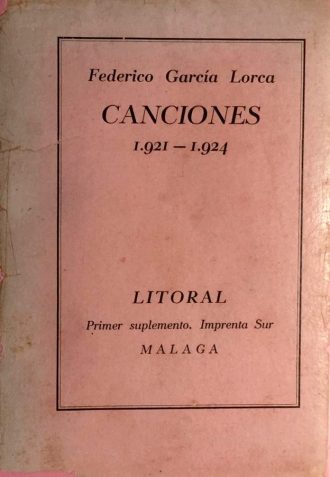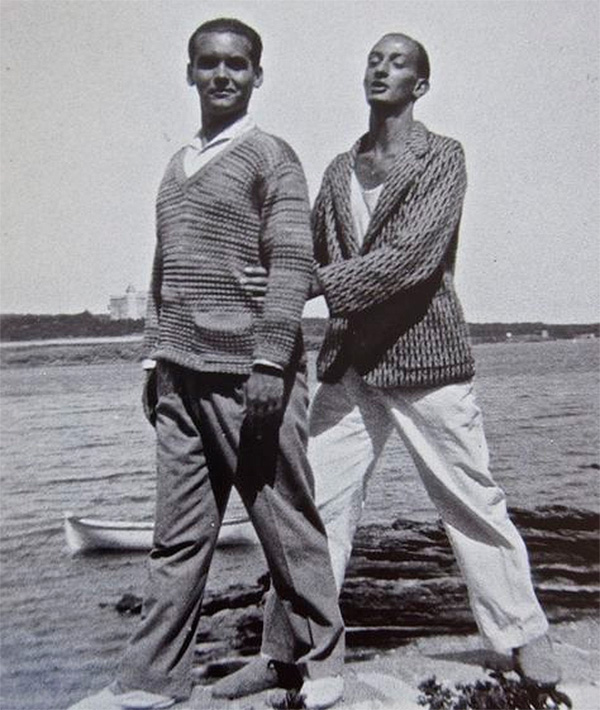
It is a book of poems (almost a hundred) entitled in its first edition Songs (1921-1924) and then Songs (Canciones). It consists of eleven groups of poems with their corresponding title: Theories, Window nocturnes, Children’s songs, Andalusian, Three shaded portraits, Games, Moon songs, Eros with a cane. 1925, Transworld, Love. With wings and arrows and Songs to end.
The themes underlying the songs are the same as those of all his poetry: lost childhood, the passage of time, death, the pain of love… However, in these texts the playfulness and humor of the avant-garde he experienced at the Residencia de Estudiantes (Students’ Residence) are more manifest.
They are short compositions that respond in many cases to structures of poetry or popular song. The language appears childish with the use of the diminutive and, in general, there is an attempt to escape from the intimate, subjective and narrative poem. The search for objectification and the flight from the sentimental tone is noticeable. The elements of Nature appear again in these poems, but as the protagonists, or personified: “Un brazo de la noche [An arm of the night] / entra por mi ventana. [comes in through my window].”
Although written between 1921 and 1923, they were not published until 1927, in an edition of the magazine Litoral, First Supplement, in the Imprenta Sur in Malaga. It was finished printing, according to its colophon, on May 17, 1927. On the cover of the first edition it appears as Canciones (1921-1924). In 1929, there was a second edition in Madrid, the publishing house of the Revista de Occidente. The most important modern editions are in: Complete Works by Guillermo de Torre, in Losada. Complete Works by Arturo del Hoyo, Aguilar, and Complete Works by García Posada., Akal
One of the poems in the book, Canción del jinete (Horseman’s Song) , appeared in advance in the Bulletin of the Centro Artístico in 1924. Very few others were published earlier in magazines. The exceptions were Arbolé, arbolé (Tree, tree), which appeared in the magazine España in 1923 and in El Estudiante in 1926, and El niño mudo (The Mute Boy), dedicated to Zenobia Camprubí, which appeared in Verso y Prosa (Verse and Prose) in 1927.
The compositions were written between the Students’ Residence and Granada, specifically during the summers spent at the family home in Asquerosa (Disgusting) (Valderrubio). Numerous poems are explicitly or implicitly dedicated to fellow Residents, contain humorous allusions to some of them, and reflect the influence of the avant-garde…. At this time he was greatly influenced by Dalí, although the painter criticized him for his lack of modernity.

The presence of the peasant environment in Asquerosa (Disgusting) is especially noticeable in some songs: “Mi sombra va silenciosa [My shadow glides in silence] / por el agua de la acequia [over the watercourse]” (Debussy); “niño, [watch out lad] / que te vas a caer al río! [You’re going to fall into the river!] (Narciso); “en el soto, [in the grove] / los alamillos bailan [the little poplars dance] / uno con otro. [with each other]” There is a poem dedicated to “Irene García. Creada” (“Irene García. Maid”) and recreations of children’s games and songs..
Federico had been determined for a long time to publish his three finished books at the same time: Suites, Canciones (Songs) and Poema del cante jondo (Poem of the Deep Song). Emilio Prados managed to get Lorca to give him the three books of poems for publication, but a typographical incident put paid to the project. Typos in a contribution to the first issue made Lorca indignant and he reproached Prados for not having proofed them before publication. Prados returned the manuscripts to Federico together with a typed copy and insisted that he correct them. He also asked him to publish the Romancero Gitano (Gypsy Ballads), but Federico, once again, wanted to delay it.
The reviews were excellent. After the publication of Canciones (Songs), a review in the El Sol newspaper by Esteban Salazar Chapela praised the book, emphasizing its balance between the modern and the traditional. On July 31, 1927, El Sol published De una generación y su poeta (Of a Generation and its Poet) by Ricardo Baeza, which stated: “[…] this generation offers us a crop of poets as intelligent as Alberti, Salinas, Guillén, De Diego, De la Torre, Espina, etc., and among them a truly great poet, Mr. Federico García Lorca, who, it seems, after Mr. Antonio Machado and Mr. Jiménez, is presented to us as the first contemporary Spanish lyricist”.
During the summer of 1927, reviews of Mariana Pineda, which had just opened on 24 June in Barcelona, also began to appear. The reviews that appeared in the press were very important for García Lorca, because, as he once confessed in a letter to Salazar, it depended on them that his family would consider his career as a writer and leave him alone to seek an “official” path”.
En la luna negra,
[In the black moon,]
de los bandoleros,
[ome to the horseback bandits,]
cantan las espuelas.
[spurs ring a song.]
Caballito negro.
[Black pony.]
¿Dónde llevas tu jinete muerto?
[Whither with your dead rider are you going?]
…Las duras espuelas
[…The strong spurs]
del bandido inmóvil
[of a stirless bandit]
que perdió las riendas.
[whose reins are down.]
Caballito frío.
[Cold pony]
¡Qué perfume de flor de cuchillo!
[What a fragrance in the dagger’s flower!]
En la luna negra,
[In the black moon]
sangraba el costado
de Sierra Morena.
[the side of Sierra Morena
bled from a wound]
Caballito negro.
[Black pony.]
¿Dónde llevas tu jinete muerto?
[Whither with your dead rider are you going?]
La noche espolea
[The night spurs]
sus negros ijares
[its black flanks]
clavándose estrellas.
[nailing stars to itself.]
Caballito frío.
[Black pony.]
¡Qué perfume de flor de cuchillo!
[Whither with your dead rider are you going?]
En la luna negra,
[In the black moon]
¡un grito! y el cuerno
largo de la hoguera.
[a cry! And then the long
deep bonfire horn.]
Caballito negro.
[Black pony.]
¿Dónde llevas tu jinete muerto?
[Whither with your dead rider are you going?]